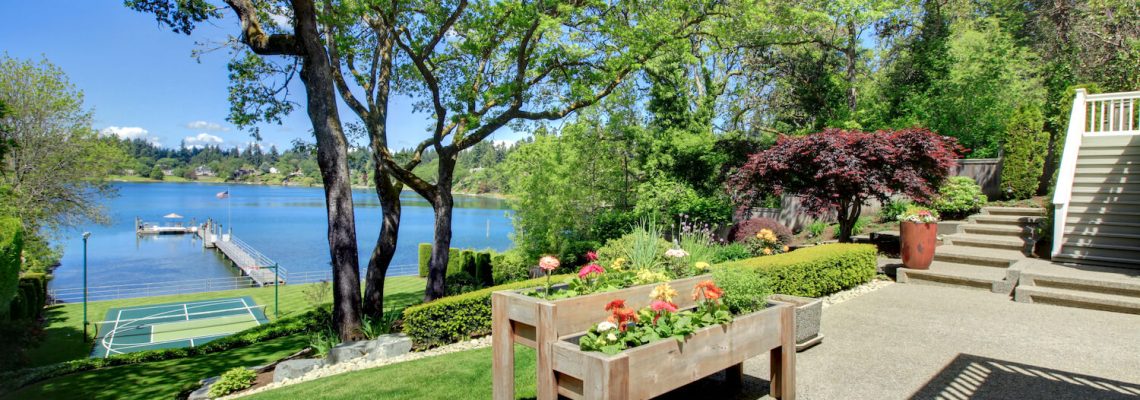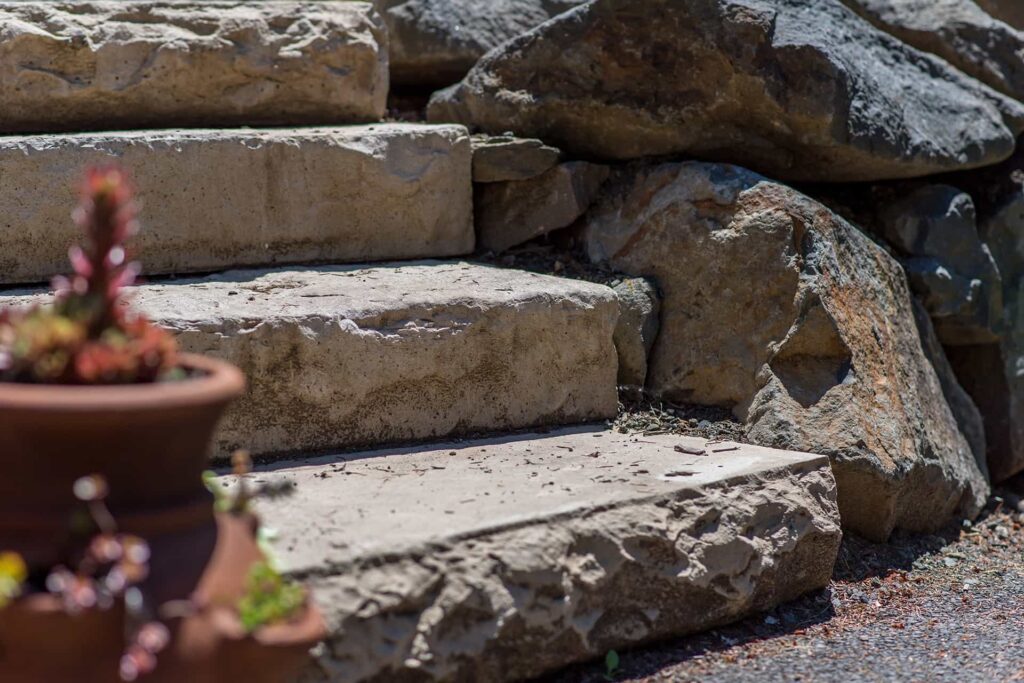When it comes to creating a beautiful and functional outdoor space, many homeowners and landscape designers focus on the lush greenery, colorful flowers, and well-maintained lawns. While these elements are undoubtedly essential components of a well-rounded landscape design, there is another crucial aspect that often goes overlooked: hardscaping. Hardscapes refer to the non-living elements in a landscape, such as pathways, patios, walls, and other man-made structures. Integrating hardscapes into your landscape design offers numerous benefits that can transform your outdoor space into a functional and visually appealing oasis.
In this article, we will explore the advantages of using hardscapes in your landscape design.
1. Increased Functionality Plan
One of the primary benefits of incorporating hardscapes into your landscape design is the increased functionality they provide. Hardscapes can help define various areas within your outdoor space, creating zones for different activities. For example, a well-designed patio can serve as an outdoor dining area, a place to relax with a book, or even a spot for entertaining guests. Pathways made from hardscape materials like pavers or flagstone can connect different parts of your garden, making it easier to navigate and explore.
By adding hardscape elements strategically, you can maximize the usability of your outdoor area. Whether you want to create a space for cooking, playing, or simply enjoying the outdoors, hardscapes can be customized to suit your specific needs and lifestyle.
2. Low Maintenance Benefits
Compared to natural landscaping elements like grass and flowers, hardscapes are relatively low maintenance. Once installed correctly, they require minimal upkeep, saving you time and effort in the long run. Unlike grass that needs regular mowing, watering, and fertilizing, or flowers that require pruning and deadheading, hardscapes generally only need occasional cleaning and minor repairs.
Materials commonly used in hardscaping, such as concrete, pavers, and stone, are durable and can withstand various weather conditions. They are resistant to pests, weeds, and diseases, eliminating many of the maintenance challenges associated with traditional landscaping. This low-maintenance aspect is particularly appealing to homeowners with busy schedules or those who prefer a more hands-off approach to landscaping.
3. Increased Property Value
Well-designed hardscapes can significantly enhance the value of your property. When potential buyers assess a home, they often consider the outdoor space as an extension of the living area. A thoughtfully designed and properly executed hardscape can be a major selling point. It not only increases curb appeal but also adds functional outdoor living space, making your property more attractive to potential buyers.
Additionally, hardscape features like patios, fire pits, and outdoor kitchens can create a sense of luxury and exclusivity, which can justify a higher asking price for your home. Investing in hardscaping can be a wise financial decision, as it not only improves your quality of life but also boosts your property’s market value.
4. Landscape Erosion Control
Erosion can be a significant concern in landscapes, especially in areas prone to heavy rainfall or steep slopes. Hardscapes play a vital role in erosion control. Features like retaining walls, stone borders, and terraces can help prevent soil erosion by stabilizing the ground and redirecting water runoff. This not only protects your garden but also prevents the loss of valuable topsoil and the associated maintenance challenges.
Properly designed hardscape elements can also reduce the risk of flooding by controlling the flow of water through your landscape. This is particularly important in areas where heavy rainfalls are common, as it can help prevent water damage to your property.
5. Add Improved Accessibility
For homeowners with mobility issues or those who want to make their outdoor space more accessible to everyone, hardscapes are an excellent solution. Unlike soft landscaping elements like grass or gravel, hardscapes offer a smooth and even surface, making it easier for people of all ages and abilities to move around comfortably.
Accessible pathways, ramps, and carefully designed outdoor seating areas can improve the overall accessibility of your outdoor space, ensuring that everyone can enjoy it fully. This inclusivity is not only practical but also adds value to your property.
6. Longevity and Durability
Hardscapes are built to last. When installed correctly and using high-quality materials, hardscape features can withstand years of use and exposure to the elements. Unlike some natural landscaping elements that may require periodic replacement or rejuvenation, well-maintained hardscapes can maintain their appearance and functionality for decades.
Investing in durable hardscapes can save you money in the long term, as you won’t have to worry about frequent replacements or repairs. Additionally, many hardscape materials, such as stone and brick, develop a charming patina over time, enhancing their aesthetic appeal as they age.
7. Versatility in Design
Hardscaping offers endless design possibilities, allowing you to express your creativity and tailor your outdoor space to your unique preferences. From choosing different materials and colors to experimenting with various shapes and patterns, hardscape design is incredibly versatile.
Whether you prefer a contemporary, minimalist look with clean lines and concrete surfaces or a more rustic and natural appearance with flagstone pathways and stone walls, there is a hardscape style that can complement your overall landscape design. This flexibility in design ensures that your outdoor space reflects your personal style and integrates seamlessly with the surrounding environment.
8. Seasonal Appeal
While natural landscaping elements like flowers and trees change with the seasons, hardscapes can maintain their visual appeal year-round. In the depths of winter, when the garden is dormant, hardscape features like stone walls and architectural elements can provide structure and interest to your outdoor space. In the spring and summer, hardscape materials like brick and concrete can serve as a backdrop for vibrant plantings, creating a harmonious balance between the hardscape and softscape elements.
This year-round appeal ensures that your landscape remains inviting and aesthetically pleasing, no matter the season. It allows you to enjoy your outdoor space even during the colder months when traditional landscaping may be less visually engaging.
9. Environmental Benefits
While hardscapes are non-living elements, they can have positive environmental impacts when designed and installed thoughtfully. Permeable hardscape surfaces, such as permeable pavers and gravel, allow rainwater to penetrate the ground rather than running off into storm drains. This can help recharge groundwater and reduce the risk of flooding in urban areas.
Additionally, by minimizing the use of water-intensive landscaping elements like lawns, hardscapes can contribute to water conservation efforts. Less water usage means lower water bills and a reduced environmental footprint.
10. Enhanced Aesthetics
Last but certainly not least, hardscapes can elevate the overall aesthetics of your landscape design. Well-placed hardscape features can serve as focal points, drawing attention to specific areas or creating a sense of balance and harmony in your outdoor space.
Hardscape materials come in a wide range of colors, textures, and finishes, allowing you to choose elements that complement your home’s architecture and the natural surroundings. Whether you opt for the timeless beauty of natural stone or the clean, modern lines of concrete, hardscapes can add a level of sophistication and elegance to your outdoor environment.
Hardscapes Conclusion
In conclusion, hardscapes offer an array of compelling advantages that can elevate your outdoor living experience. They enhance functionality by creating distinct areas for various activities and ease of movement. Their low-maintenance nature allows you to enjoy your outdoor space without the constant upkeep required by natural landscaping elements.
Moreover, hardscapes contribute to your property’s value, making it more appealing to potential buyers. They offer erosion control, protecting your garden and property from damage. Hardscape elements can also enhance accessibility, ensuring that your outdoor space is welcoming to people of all abilities.
Durability and versatility are key features of hardscapes. They withstand the test of time, and their design possibilities are nearly endless, allowing you to tailor your outdoor space to your unique style. Hardscapes provide year-round aesthetics, offering visual interest even when natural elements are dormant. Additionally, they can have environmental benefits, particularly through permeable surfaces and reduced water usage.
In short, hardscapes are a wise investment, offering both immediate and long-term benefits for your outdoor environment. Their functionality, low maintenance, and aesthetic appeal enhance your quality of life and property value while contributing positively to the environment. So, when planning your next landscaping project, consider the transformative potential of hardscapes in creating the outdoor oasis you’ve always dreamed of.


